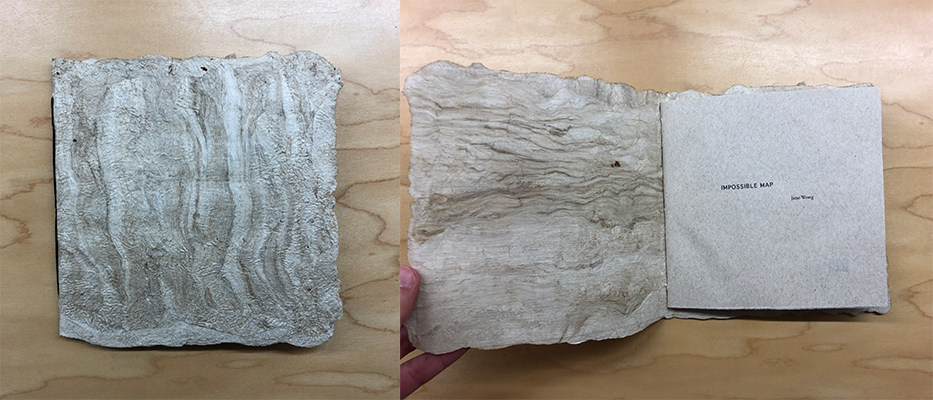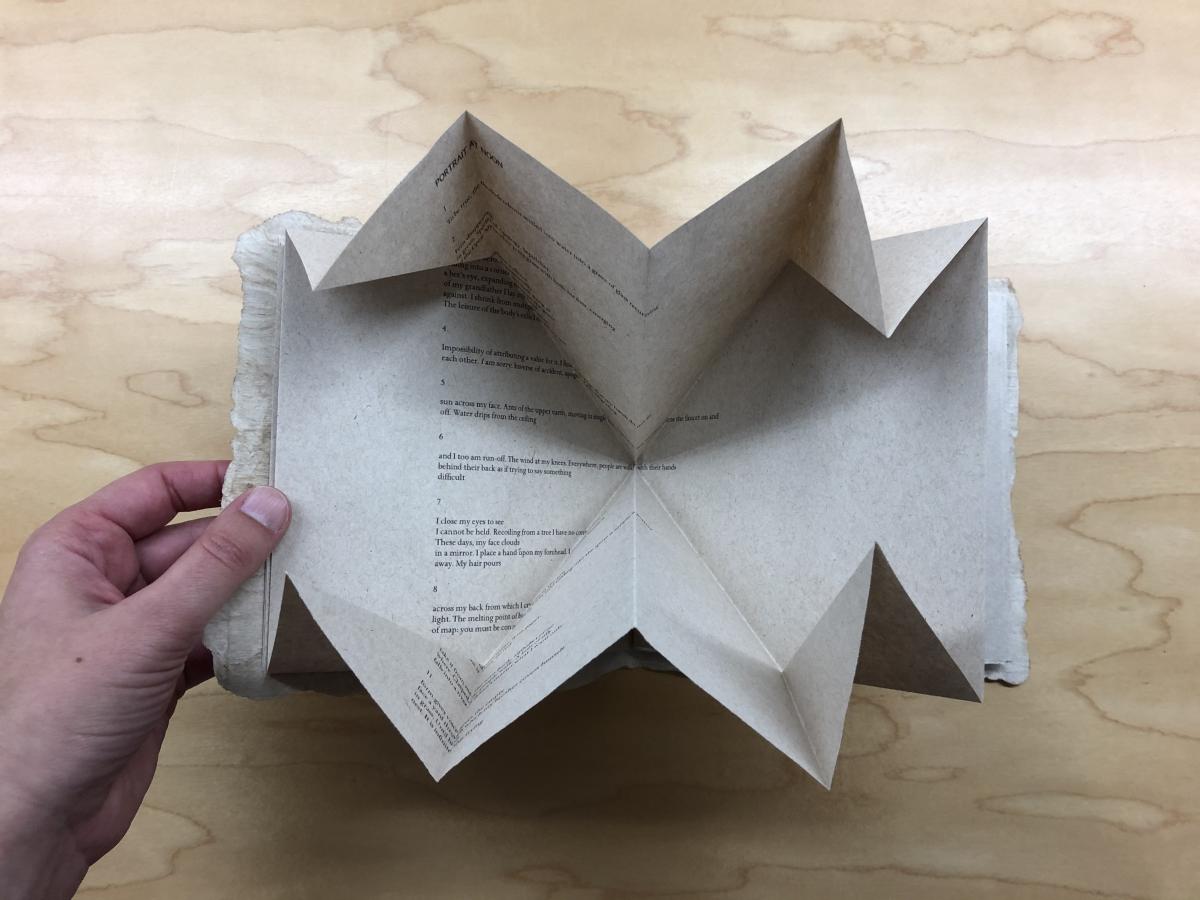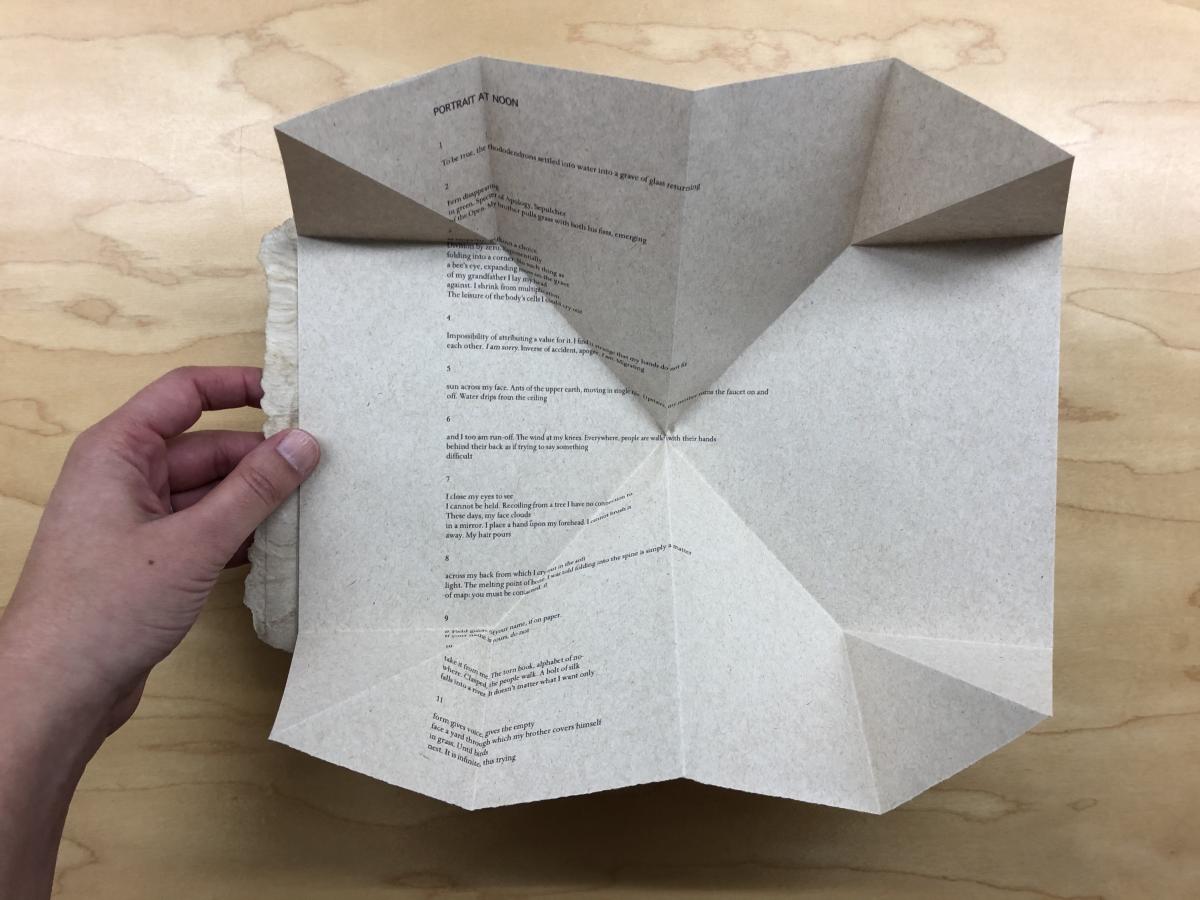
I love encountering books with a physical form that echoes their content. Jane Wong’s Impossible Map, published by Fact-Simile Editions in 2015, does just this: The interior pages are a series of Turkish map folds, a form which expands out, opening like a flower, opening like discovery.

Wong’s poems in Impossible Map are elliptical and incantatory, illustrating that a map can obscure as much as it reveals. The large pages of the book, when fully unfolded, suit the expansive, searching quality of the poems. We’re used to standard-sized books, and Impossible Map reminds us that other possibilities exist.

Impossible Map suggests that physical form can follow content in inventive ways, but it also suggests that common forms from everyday life, like maps, can become points of departure for creative acts. What territories in your life need mapping right now? What worlds would you fold inside a map—for safekeeping, to show you the way back, to show you the way forward? How might you write a poem that could act as a map? Consider drawing a map—whether of a physical space or an emotional or mental one—and use that a springboard for a poem, situating yourself in that landscape you’ve charted.
To make a Turkish map fold book of your own, here are two guides available online that you might follow:
- Written directions with diagrams for use with a rectangular piece of paper from the Book Arts Program at the University of Utah library; includes ideas for content specific to K-12 grade levels and subject areas
- Video directions for use with square piece of paper from the North Bennet Street School in Boston
What terrain might a poem allow you to explore today?

